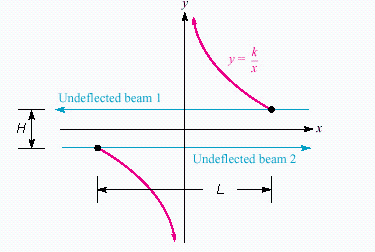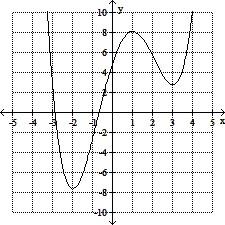List the potential rational zeros of the polynomial function. Do not find the zeros.f(x) = 6x4 + 3x3 - 4x2 + 2
A. ±  , ±
, ±  , ±
, ±  , ± 1, ± 2
, ± 1, ± 2
B. ±  , ±
, ±  , ±
, ±  , ±
, ±  , ± 1, ± 2
, ± 1, ± 2
C. ±  , ±
, ±  , ± 1, ± 2, ± 3, ± 6
, ± 1, ± 2, ± 3, ± 6
D. ±  , ±
, ±  , ±
, ±  , ±
, ±  , ± 1, ± 2, ± 3
, ± 1, ± 2, ± 3
Answer: B
You might also like to view...
Parallel beams of similarly charged particles are shot from two atomic accelerators L = 34 meters apart, as shown in the figure below. If the particles were not deflected, the beams would be 

/>, for some k. Find k.
?

Find the first 4 terms of the recursively defined sequence.a1 = 4, an+1 = 
A.  , 16,
, 16,  , 64
, 64
B. 4,  ,
,  ,
, 
C. 4,  ,
,  ,
,  ,
, 
D. 4,  , 4,
, 4, 
Determine any local or absolute extrema as indicated.Use the graph of f to estimate the absolute extrema.
A. Absolute maximum: approx. 8.08; absolute minima: approx. -7.67 and 2.75 B. Absolute maximum: ?; absolute minima: -2 and 3 C. No absolute maximum; absolute minimum: approx. -7.67 D. Absolute maximum: approx. 8.08; absolute minimum: approx. -7.67
In right triangle ?CAT, ?C is the right angle. Then
(a) (TA)(sin A) = CT. (b) (TA)(cos T) = CT. (c) (TA)(sin T) = CA. (d) (a), (b) and (c) are correct. (e) (a), (b) or (c) is correct.